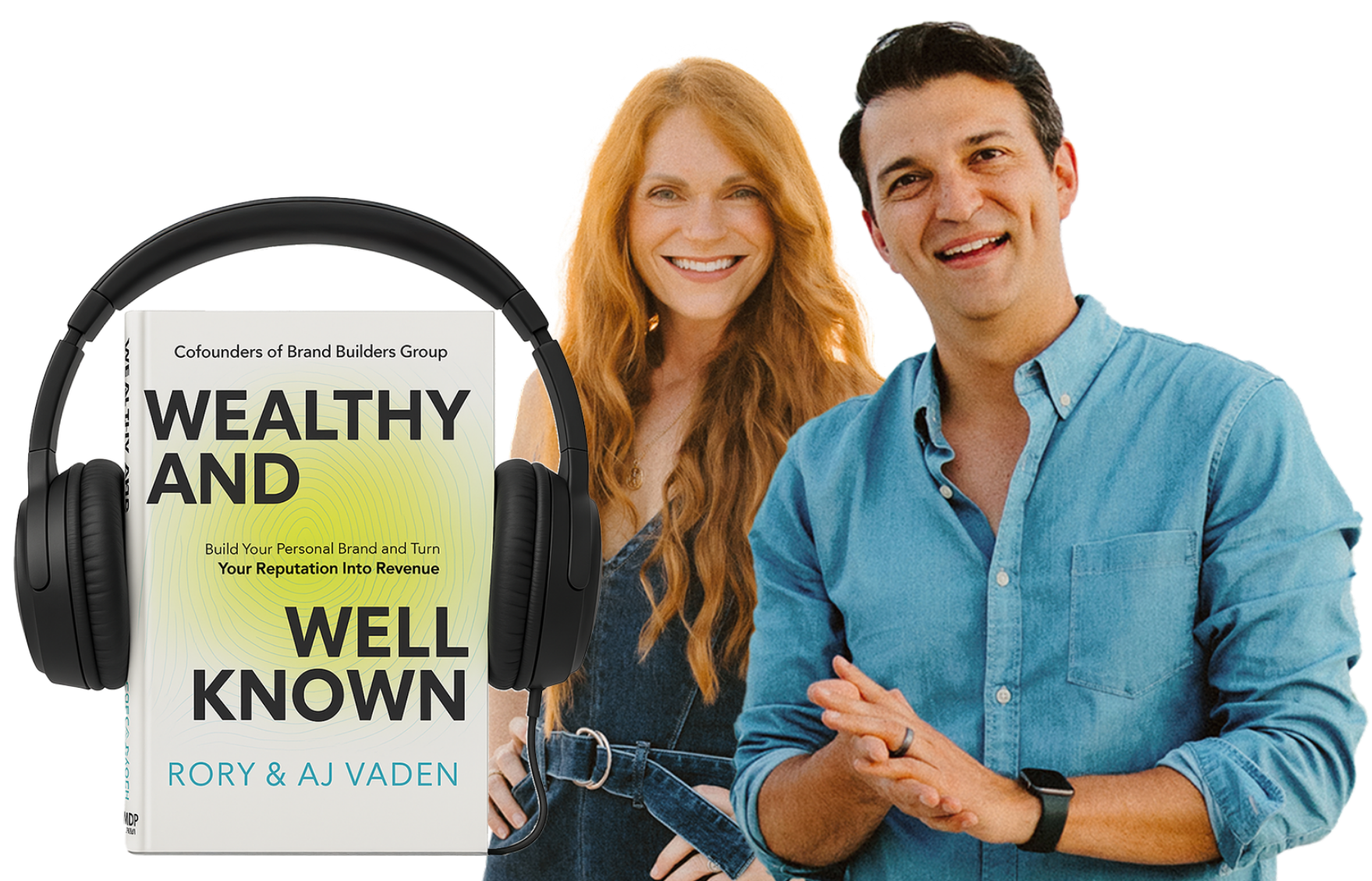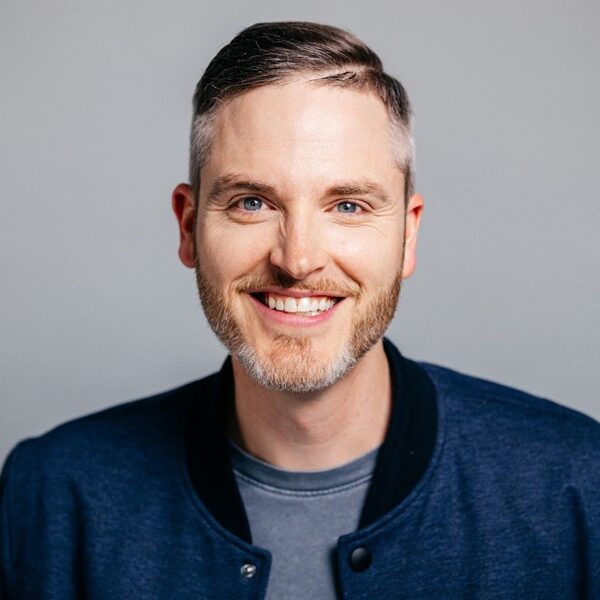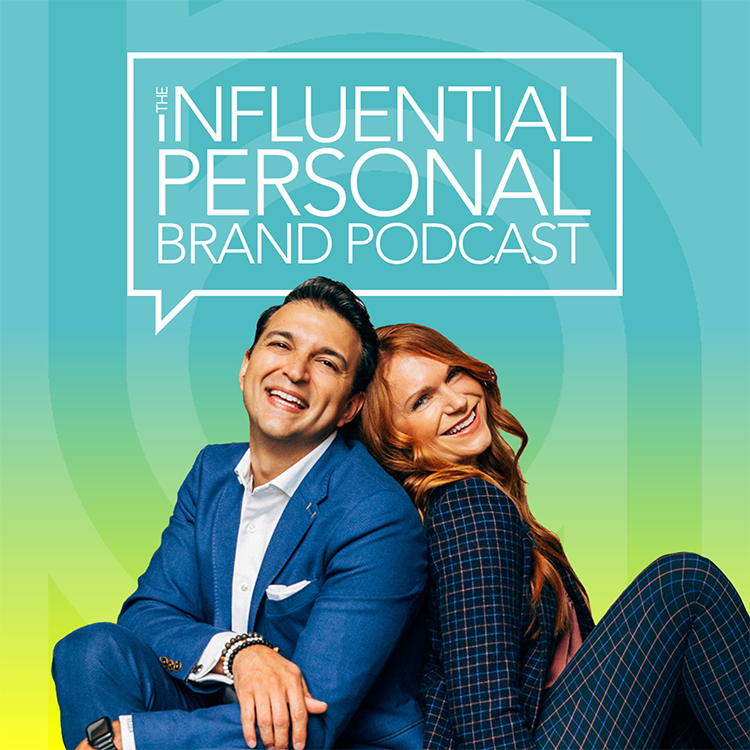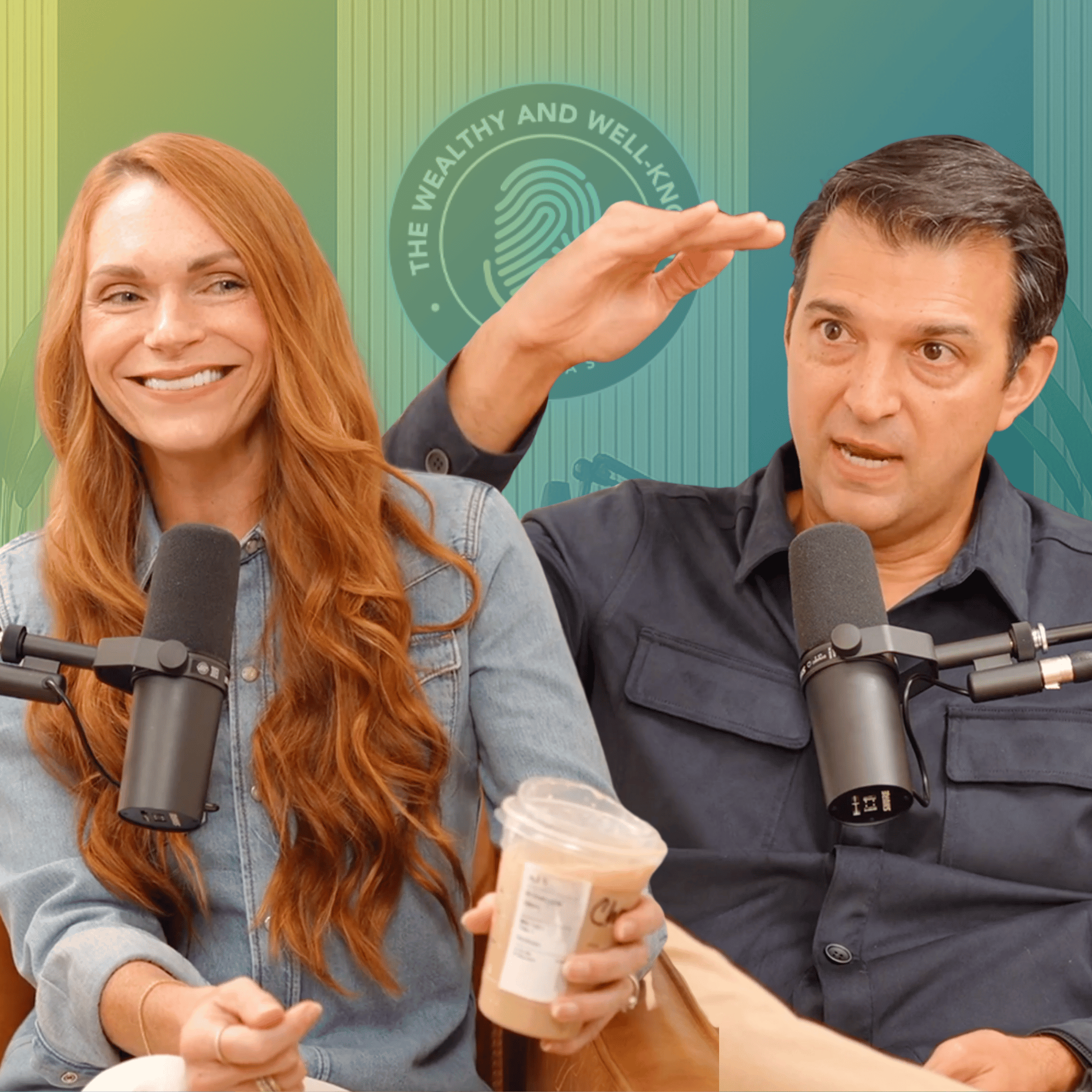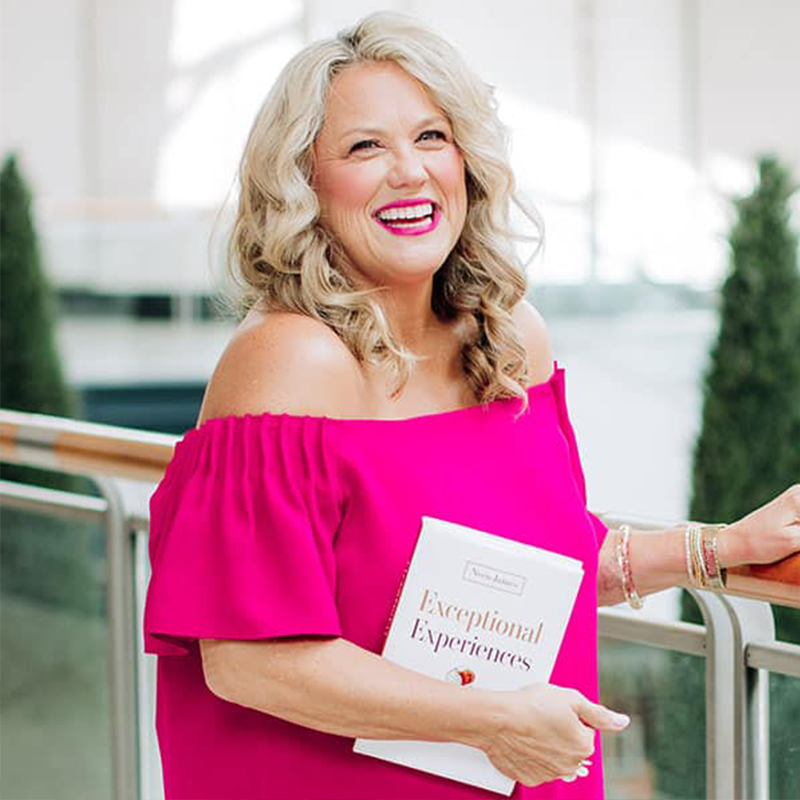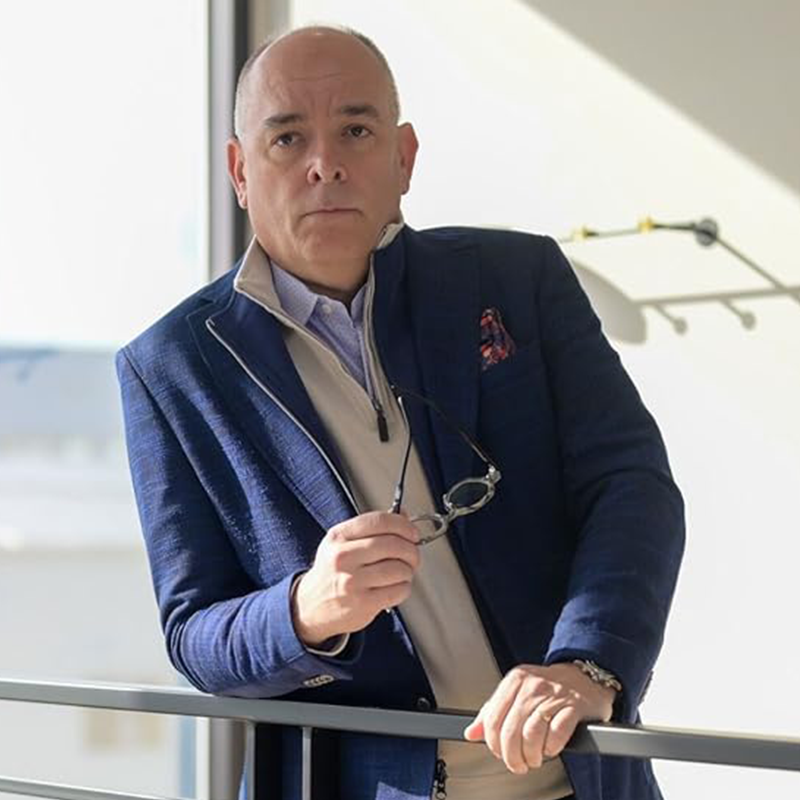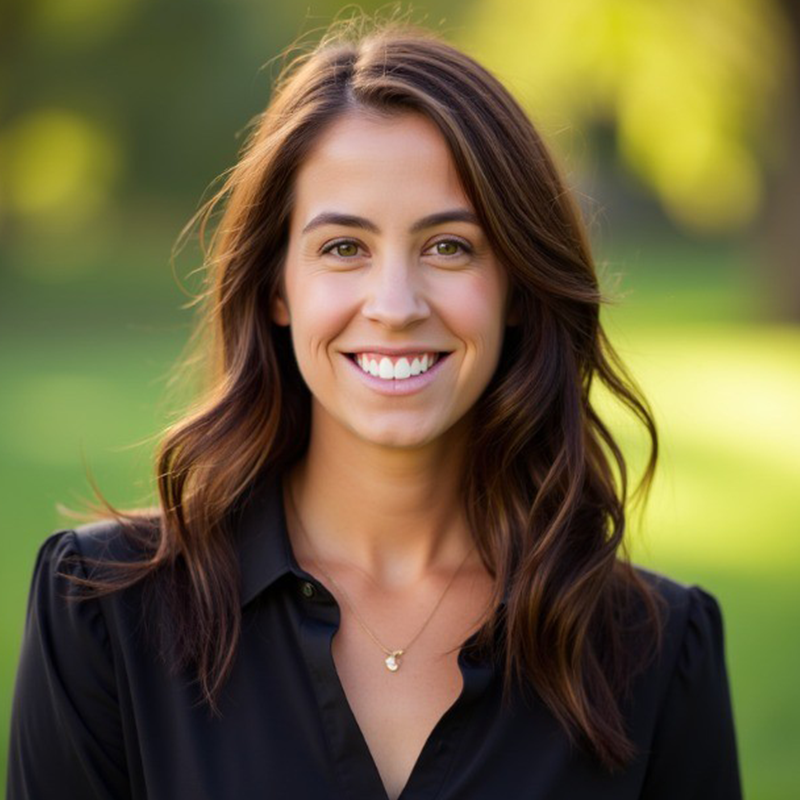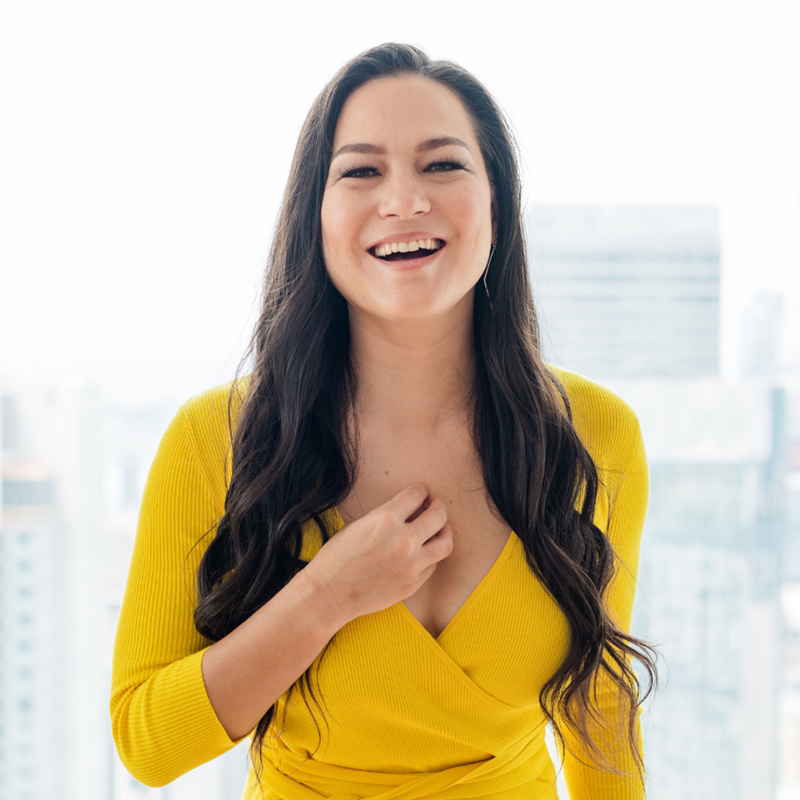RV (00:02):
There’s people that I learned from, and then there’s people that I do life with. And Sean Cannell is someone that is both of those. I like to think anyways this man is so brilliant and he is touched by God. And I really believe that he is somebody worth following, not only professionally but personally. And the more I’ve gotten to know him, the more that I have loved him and believed in him, and also learned from him. He is without a doubt, one of the world’s leading authorities on YouTube strategy growing with video. He is the og, like one of the OGs in this space. He’s the CEO of Think Media, the host of the Think Media podcast. His mission is to help 10,000 purpose-driven people, create a full-time living with YouTube. Right? It’s a very clear, specific niche. Sean’s YouTube channels have over two and a half million subscribers.
RV (00:55):
His videos have been viewed 150 million plus times. He has been featured in a number of places as one of the top YouTubers. He has an event this year. He, he does an event every few years he’s had Alex Hermo come, he’s had Dave Ramsey come. He is got Cody Sanchez come in this year. Like Gary Vaynerchuk, a main, this guy owns his space. It’s such a great example. And so I thought, this is crazy. We have to have him on to hear his story and also for me to get some free YouTube strategy coaching at the same time. So, Sean, welcome to the show, brother.
SC (01:32):
Rory. So grateful to be here and to be hanging out with you and your community and so grateful for you in general throughout the years, your frameworks, your knowledge, your insights have really shaped my career and been such a blessing to me. You be guesting on our podcast has been a huge blessing to our community, and so super grateful to be able to hang out with you today. Yeah.
RV (01:53):
Well, thanks brother. And I wanna, I want to hear the story of how you got started. You were, it was, this is your youth pastor and I want to just hear like, when did you get into the YouTube game? How did you get into the YouTube game? Why did you get into the YouTube game? Because I know that it was not back then what it is now and what it’s becoming.
SC (02:15):
Yeah, so for me, I actually got started in video in 2003, volunteering at my local church. And what had happened, I actually got expelled from Christian High School. I went very prodigal and partying and doing raves and rave drugs and all this stuff. And, and eventually I kind of hit rock bottom. So I went to Bible college for a year. Never would’ve thought I would wanted to do that, but I want, I knew I needed to do something different and get out of kind of a toxic friend group and a toxic cycle. Wow. Study the Bible for myself. And so when I came home, I didn’t want to get into trouble. I think about the biblical story of David being on his porch, seeing Bathsheba naked when he should have been at war. And knowing that lesson, I was like, let me just, let me just get busy and do something.
SC (03:00):
So sight unseen, my parents actually went to a new church and I had never been there, but during, before summer started, I called ahead and was like, can you see if they have an internship? And they didn’t. But they made a spot for me in the youth ministry, like, okay, somebody wants to come and work for free. And so I volunteered at a youth ministry that had like eight kids at it an hour north of Seattle. And the youth pastor handed me a video camera, Canon HV 30 with mini DV tapes. Nice. and Adobe Premier, like 1.0 on a bunch of cd r CD rom, you know, and a very slow computer old school. And so this is 2003, you know, 20 years ago that I start doing video. And of course, Roy, these videos are terrible. You know, people are, they, they wanna start creating content.
SC (03:45):
Like, what if my first videos are bad? They will be like, what if my first videos are embarrassing? That’s part of the process. Like for me, I was doing it before social platforms even existed, but I was learning discipline because I made a video announcement video every single week for the youth ministry that’s like 52 videos a year. So I was like, you have a weekly podcast, like a weekly show. Like I was doing that before social and kind of doing the repetitions. And then in 2007, so weird. ’cause Again, churches are usually 10 years behind. And not only that, we were not, we’re in a rural church, we weren’t in like a cool hip, like cutting edge. But our pastor went to a few cool conferences and he learned about Twitter, started thinking more about social media. So we actually started a mini reality show, like a behind the scenes vlog.
SC (04:34):
Again, it was just terrible. But we shot, so we started a YouTube channel in 2007 and started posting content, and not even really the sermons necessarily, because there was like a time limit and you’d have to chop them up. There was a 15 minute time limit on YouTube at the time. Mm. And we just started posting random videos. And so fast forward to today, I’ve been doing video for 20 years, YouTube for 17 years. And my journey took me on all kinds of paths of starting my own freelance business, wedding videos, hip hop music videos, videos for like the YMCA helping pastors and leaders that were authors and speakers being their channel managers, filming videos for them, helping them on social media. Eventually going to Vegas to be a director of communications, doing some paid ads, helping a pastor named Benny Perez kind of on his personal brand plus the church brand.
SC (05:25):
And so I clocked not just 10,000 hours, probably 30,000 hours Wow. In just video and everything about it and YouTube and social platforms between 2003 and about 2015 when I launched out to start our company today. So growth was pretty rapid, but it’s one of those things where like how deep the foundation is compared to once you start building the tower, how deep the roots go, and to how tall and strong the tree is. So all this leadership, teamwork lessons, mistakes I made really positioned us for the company of about 30 people, multimillion dollar budget, running big events. All of that was really in the local church and in small business over the years.
RV (06:08):
That’s awesome, man. What, what, what a ride. So like, so YouTube Secrets that’s the book that you wrote was like, again, like just one of the mainstays in that space is sold, you know, into the six figures of copies sold. Everybody wants to create, right? They wanna start, where do we start? How do we start, what do we doing wrong? What do we need to know? Like what, you know, how much does the camera matter like today? And, and actually even before that, I wanna address the, is it too late to start, right? Because you started in 2003, really like 2016, 17, got into it. And I think it’s like, I even have this fear on YouTube, right? Like, I’ve been speaking, I’ve been writing books, we’ve been building companies, but like, I still really haven’t started on YouTube. Like, I have put some stuff up there, but like, I haven’t really focused on YouTube and you know, I have to admit, like even myself, I struggle with like, eh, is it like, you know, all the, all the, you know, stars have already come and hit like, did I miss the wave?
RV (07:17):
Or like, talk to me about that.
SC (07:20):
Yeah. Well it’s not too late and I’ve got data to back it up. One Goldman Sachs research talked about the creator economy that’s bigger than YouTube, but that specifically speaks to these social platforms. And many listening to this probably wouldn’t even fit inside of the creator economy, although there’s a lot of overlap. ’cause In the creator economy, it would be the businesses like Adobe and Cap Cut providing software. And it would be creators who are kind of the new breed of self-employed entrepreneurs that make money directly off these platforms, right? What happens is business owners like yourself, small business owners, personal brands that are maybe authors and speakers, they wouldn’t really get lumped into that. But eventually they think, okay, what about, what if I start creating content, not just to promote my offers and get leads and prospects, but also to get a new revenue stream that in and of itself, building my influence could amplify what I’m already doing, but create new opportunities.
SC (08:17):
So the creator economy, that’s sort of what we’re trying to define there. And Goldman Sachs research said that in the next three years, it’s gonna double that. The total addressable market wow, is about 250 billion. And it’s gonna be a half a trillion industry by 2027. So we see number one, a massive expansion. Two, we actually see the users and consumption of YouTube continuing to go up right now. So if we look at the dictionary definition of saturation, it’s actually impossible for YouTube to be saturated so long as it’s still expanding. Now at some point in the arc of anything, there might be it flat lines plus more people keep expanding and how much content’s being created. And there’s maybe a crossover, but that has not happened. And as we see technology still go around the world, new people are still joining the internet every day.
SC (09:05):
Youtube is getting becoming more global. The internet’s becoming more global. Internet speeds are going up and adoption of the platform overall, it just continues to expand. We’re still in that right now. So it’s still a good time to ride that expansion wave. There’s also some fascinating data about baby boomers and Gen X. It’s something like 80% of baby baby boomers are watching YouTube. Wow. I think that shouldn’t that’s crazy and it shouldn’t surprise us. ’cause If you think it’s free and smart TVs are now common and affordable, so you can turn on YouTube and follow things you’re interested in and watch video podcasts or history shows or learn solve problems. And so, and then that just trickles down the, the, the core audience is gonna be that 25 to 35. But look at the numbers for baby boomers. It’s basically all generations. And again, as more people get used to the utility, even of YouTube video podcasts are there, you know, if we take a slight side quest on video podcasts, YouTube is the number one podcasting platform.
SC (10:05):
It’s bigger than Apple and Spotify. It has been more podcasts are consumed on YouTube. They just added RSS feeds. Youtube, Google Podcast is absorbed into YouTube music. And now when you do a video podcast, go YouTube music is making a play at Spotify and making a play at Apple and owned by Google, this company is not gonna slow down or not go for the absolute cutthroat attack of every other brand and platform if we think about these platform wars. But all that to say is betting on YouTube is a really good bet and it’s still a good time to get in. Let’s talk about some of the cons, Rory, from my perspective and what I’m seeing with the data is there is rising competition and there’s a lot of competition. Yeah. And competition is highest for mediocre content. And competition is highest for low effort content.
SC (11:00):
So getting into YouTube is, I would argue not for the faint of heart. We’re living in a world now where just throwing some stuff out there is not gonna bring a, a great return. There was a time where maybe some lower effort content because of supply and demand could actually be helpful. But you, you, I think you gotta take it seriously and people are upping their game. I’m not saying it’s out of reach for people just starting. I’m not saying that you need any necessarily fancy equipment, but you do need strategy, you need a plan. And it’s gonna, it’s gonna take some level of energy. And I would say it’s gonna take energy from the principal person, the key person, the idea that, Hey, can I just outsource YouTube to somebody you should hire or, or delegate or leverage ai. But it’s just gonna take, I think it’s gonna take some thought and strategy.
SC (11:57):
So it’s it’s like the biblical passage of Jesus said, Hey, count the cost before building the tower. You know, it’s like reverse engineering. And, and that would be my next thing to say to you. Say, what do you do next? I think you asked some questions. Does it appeal to you to, to have a YouTube channel? Do you wanna be Oprah? Like legitimately, like, not if you catch my meaning. Like do you wanna show, do you, do you like the idea of having actually a video podcast? Do you, not just a podcast, but being on video and interviewing people. Do you, like, would you wanna have a solo show and for the love of serving people in that format or the love of creating content, I’d say that’s a really good first foundation. Yes, there’s maybe other ambitions I’d, I would love to have a show impact people change lives.
SC (12:48):
I do actually, I do. I don’t want you to force me on video. Anybody can improve and get better on camera and whatnot. And I, if you’re afraid, I’m not saying that’s a sign you shouldn’t do it. But if you look ahead a few years and say, man, I think that’s something I would enjoy doing, and I think I would love to do that, and I want to change people in that video format, and let’s go bigger than YouTube. I, I just recently talked to Dave Ramsey about, he’s like, we’re platform agnostic. We, we just wanna change lives. We were on radio, now we’re on video, we’re happy to be there, but we’re on Rumble, we’re on YouTube, we’re on x Elon’s taking X seriously. Amazon Prime has got offerings. So I would actually just go bigger. Do you want a show? Do you want to be in the video game?
SC (13:34):
Because if you do, then there’s massive opportunity. Youtube is a foundation and a pillar. But once you create these video assets, there’s a lot of distribution opportunities. And if you would say yes then because it’s not too late, it’s not gonna be easy. But it is possible. And one of the biggest mistakes I think people make is they, they look at it as a tactic. Like, I want to get some leads, maybe some more sales. I’m on other platforms. Can I kick it to my team to chop up some stuff of me and get a little stuff? It’s not that that couldn’t produce some results. I think it’s gonna work best for the person who actually doesn’t treat it as a tactic, but in a way they treat it as a lifestyle, like content creation as a lifestyle and a habit. That’s not always easy.
SC (14:18):
I don’t always love doing it, but it’s something I enjoy. I, I, I love doing what I do. I enjoy my video podcast probably most of all. And there’s stressful weeks, but I look forward to it. And I want to change lives and I want to craft that content and I want to shoot great interviews and I want the results and the money is great too. And all that is great too. But I would do it anyways. And if, if that sparks, if you’re listening to this and that kind of gets a little fire in you, then I would say dive in because there’s massive opportunity to be seized right now. Te tell me then.
RV (14:49):
So I love that and I thi I I can, I can vouch for it doesn’t really take off as a dabbling thing. Like the, the days of dabbling on it and having it take off. I think those days are pretty well past us. Because, because because there are so many people on there that are taking it serious, right? Yes. And, and we’ve been just basically dabbling in social media in general. ’cause We’ve been building the company and now we’re starting to take like Instagram serious and we’re seeing results and, and is realizing to go, okay, like, you know, what if we took YouTube more serious? ’cause It could be the flagship and Instagram can roll, roll more out of that. So if, if I wanna step in and I go, yeah, I do wanna show, I I do wanna impact people, I’m fine with this being a part of my lifestyle.
RV (15:35):
Like I, it’s not something I just wanna like do for a season, but like I go, I think it would be fun. And, and, but knowing I have to take it serious, like I love what you said about the, you know, the competition is highest for the mediocre low effort content. So what do I need to focus on to go, all right, if you’re gonna step in and play, like if I’m gonna get on the field and really like, be in the game, what’s the, what, what is re what’s, what’s the requirement? Like what’s the price of admission to, to, what does that look like in terms of equipment? I need to have team strategy, frequency of posting, length of content, you know. Yeah. That kind of stuff.
SC (16:22):
Well, interestingly enough, I think step one is to go really deep in your content and really dial in who you are in your messaging. Let’s assume that stuff is dialed in. But that would be found like things like classic business principles, like a USP, what is your unique selling position? The powerful aspects of a personal brand are also amplifying your unique anyways. So starting to think through. So you start thinking through, is this gonna be a personal brand channel first and last name? Is this gonna be a channel that has a clear niche cooking with Karen, name plus niche? Is it gonna be kind, kind of a media company? Think media is the name of my channel. I coach a lot of real estate agents. And so sometimes it’s their brokerage. I think the personal brand is much more powerful. Or is, is it, is it living in Nashville? Nashville,
RV (17:17):
Yeah. Lack living in Nashville.
SC (17:18):
Yeah. That living in Nashville is an option or your personal name and, and then Sean Cannell, Nashville real estate tips, different things. So I think kind of getting clear and then of course getting clear on what is it you’re trying to achieve. And in some cases that that amount of clarity already is in a way all you need. Then you add a smartphone to it, a content schedule, and start creating content. Meaning if you are a local real estate agent, the amount of opportunity still in a 2024 world is, is shocking because it’s about executions. It’s not a lot of people that are either A, doing it, B doing it consistently A doing it at all, B doing it consistently. So I think there, that’s, that’s thing one, I think. Then what do you start with? I think in, you know, I think for everyone who’s listening to this that wants to get in the video game, I think you start with vertical video really, because it’s, it’s, at least if you are like, I don’t really, I’m not comfortable on camera yet.
SC (18:18):
I I don’t really know what to say yet. I think especially for educators, people that solve problems, entrepreneurs that listen to this, I would say, what are the top 10 to 20 most asked questions and should ask questions on you YouTube though. You’re saying like a vertical video on frequently asked questions? Well, yeah, and then I would, I would so let’s, again, let’s work out the real estate thing. So is now a good time to buy a house? So I’d pop in your car, I hope you already have a GPS holder on your, on your vent for your phone, a little phone holder. ’cause You know, pop your phone up there. You could buy a $20 mic off of Amazon, but even if you don’t, you can film anywhere. But your cart is such a good a, when you close the door, it makes such great audio.
SC (19:01):
If you got like a cool moon roof or something, you gotta look to it. And you sit there and you look at the camera, hit record. Is now a good time to buy a house or not? Here’s three things to consider if you’re thinking about buying a house and deliver that content. Be brief, be bright, be fun and be done. Keep it under 60 seconds. Rory. The power of this for everybody listening, ’cause I know I’m the YouTube guide, but now I’m gonna take that vertical video asset and I’m going to, on my YouTube channel, upload it as a YouTube short, but I’m also gonna upload that as an Instagram reel. Sure. I’ll probably throw it on TikTok so long as you know, until it’s fully banned. And then I’ll throw it over on, when I put it on Instagram, it’s gonna be connected to my Facebook fan page.
SC (19:43):
And, and as meta it just auto posts over there. I think cap cut is my favorite app and software. It’s very user friendly. It’s worth 10 bucks a year or whatever to pay. It has great captions. If you wanna put a little what we’re using, yeah, if you wanna put a headline on it or something that’s kind of a hook point, the white bars or whatever at the top it says is, is now a good time to buy a house in Nashville? Question mark. And then you’re delivering the content so you can spice it up a little bit and just get comfortable. You’re on break, you’re in between meetings, film that in your car, edit it on your phone, start distributing it to the platforms. The reason I, there’s multiple reasons I’d say doing that. The, the ROI that could start coming your way from all the platforms, dms, conversation, sales leads is extremely high.
SC (20:33):
Probably higher, not on YouTube at first because YouTube is a longer game and it’s a marathon and not a sprint. But one of the other reasons I want you to do this is just because of getting the reps in, of communicating. Whenever you’re inspired that you have a client conversation or a conversation that you’re like, man, that’d make a great video, film that and, and start building your content creation muscles. Because as soon as we step into horizon, horizontal, longer form content, you asked how long? Eight minutes, 10 minutes, 12 minutes. If you want a secret that is publicly observable, you can see that some of the top entertainment YouTubers like Ryan Trahan or Mr. Beast, their videos are 24 minutes. That’s not by accident. It’s because people, YouTube wants time on platform. So if a video is good and entertaining and holds attention and is longer, it will out.
SC (21:24):
24 minutes is better than 12 because it’s keeping people on the platform longer. The algorithm will push it further for that very reason. Getting stuck in that could derail listeners. ’cause We’re getting very technical now. Well then I need to force it to 24. It’s not what I’m saying. Eight’s fine. But as soon as you get into horizontal, if we, if we look at a Cody Sanchez or Alex Hermo, you gotta admit, these are some in entrepreneur space, these are people we’re competing with and they’ve got staffs teams, explosions, creative hooks, openers, B roll, and longer form if you want that real professional edge, couple thousand bucks, you know, a thousand to get a can. Some light. Yeah. 2000 to build like a nice setup. What the pros are using, they’re spending five or 6,000. And what the pros are doing in the entrepreneur space is hiring a shredder at some point.
SC (22:20):
Usually someone in person that’s a producer, shooter, editor, if their team is lean, that would mean not just a videographer, but if, if you could get it all in one. Somebody who also kind of like, is like, Hey, let’s shoot the intro again. We want to grab attention, let’s hit that hook, right? Hey, let’s make sure we get everything and has a little creative edge. And if they’re producer, shooter, editor, they’re kind of thinking concept to completion, they might also edit it, upload it. If there was a dream hire, it would be somebody that you could pay 60, 70, 80,000 a year. And over time, perhaps you know, a hundred grand, but it’d be worth it to kind of maybe one other admin person to be that generator that puts out that high qual quality content for you. So someone says, Sean, I don’t have the money.
SC (23:03):
Well then do it yourself. But then it’s the learning curve is of course you learn to edit your video shoot cameras. We have a lot, we have a whole free college called Think Media on YouTube that will train you in all of that. So you can solve the problem from either direction. And one little tip there too is you might involve someone in the vision and say, Hey, listen, I’m gonna give you half the, the channel revenue for so long as you work for me. As you help me build this and maybe cast some incentive and some vision, like that day one it’s zero and day a hundred, it’s probably still zero. But if they’re bought in, then you could grow together. And this would go all the way back to like, you wanna build a content empire, you know, you want to build you, you see the power of personal brand Elon Musk, you see the power of personal brand Warren Buffet. You see the power. And so you’re like, I wanna build Cody Sanchez. I wanna build a personal brand. And YouTube is perhaps the greatest place to do it. But those that are doing it at a high level are are putting out high quality content with, you know, thousands of dollars of year.
RV (24:02):
Yeah. They’re not doing it accidentally. And it is that way. Like it, you know, it it, it blows my mind. Like, you know, when people, people ask me all the time, can they, can I get ’em on Lewis’ show or Ed’s show? And it’s like what they’re looking at more than anything is their YouTube followers, right? Mm-Hmm . It’s just going like, do they bring a YouTube, do they bring a YouTube audience? If I have this person as a guest on the show, like it’s super impressive I think to have that u the YouTube following you, you mentioned the channel manager idea. So because you’re saying like, if you could get a shredder, which feels fun to say 60 to 80,000 a year, you know, if you’ve got a bus, a real business, you, you’re gonna invest at that level. The the are there a lot of people that do that? They do like a revenue share on like basically become my channel manager and take a and they’re getting a, a percentage of the revenue that comes from, like the ads from the channel. Is that like really common or not? So like,
SC (25:01):
That’s just something I would pitch to the individual if you wanted to growth hack it more and get them to have buy-in. Yeah, there’s a few agencies that do channel management. There’s individuals that do channel management. You’re just wrestling with the tension. The same for paid ads. Do you bring a paid ads person in-house, a media buyer? Or do you work with an agency? Pros and cons and maybe one thing is right on one season and one or the other and you might back and forth, who knows? So generally if I would say building your own media team would be ideal but if you found the right agency that would, that would work too. What you start looking at is the, the YouTube pipeline. In fact, what is actually fascinating was Patrick Ben-David recently revealed his like, podcast workflow. I’ll come back to it when you ask the next question ’cause you’ll probably be fascinated, but, and by the way, I wanna hear that it’s like how many staff members it is?
SC (26:01):
I’ll, I’ll look it up. It’s like, it’s like 10 positions. Wow. And so what you start thinking about is you start going back to, okay somebody at the start is definitely gonna wear a lot of hats. And if it’s just you at the start, you’re wearing all the hats. And the idea of YouTube would be let’s, let’s break it down. Who’s, who’s the shooter? You set the camera up, you could just at least get the lighting right? I can, I’m in my home office, I can create content by myself. I’m the shot composition. I set the lighting up here. I’ve got, you know, these details. I think about the details and the bit, a lot of stuff that would stress people out. So I’m the shooter, I also am the researcher. So I would research not just plan out my podcast, but I’m good at research.
SC (26:45):
I’ll pull up different articles. I’m pulling that in. I’ll outline my video. I’m doing a paid brand real deal right now. So it’s a scripted video. The script is getting approved by the brand you are then the talent on camera, once it’s captured, are you then the editor, you’ve got, you edit it all together. And is it just basic editing that is becoming easier even with ai? Or is it next level editing? Then once the video is exported, you upload it and now it needs to be optimized. So you have the title. It’s many top YouTubers are famous for not just taking their thumbnails seriously, but paying hundreds or even thousands of dollars for one thumbnail. You can find circles on Twitter x of full-time thumbnail designers that just get hired by top YouTubers that just create insane thumbnails. We’re talking about a very small piece of real estate, you know, like a very, but thumbnails being that serious.
SC (27:38):
So you can also do pretty good thumbnails with Canva templates, but are you gonna learn that and tweak those and get some photography done if you’re in the thumbnail? So then it’s a thumbnail. It’s writing a great title, similar to like a blog headline or an email subject headline. You want people to click, you wanna describe it. You maybe want some search based aspects to it. You want some human psychology based aspects to it. You wanna optimize the description, not so much because that’s gonna move the needle on the video itself. It’s the content itself that’s really gonna perform. But you want the call to actions to be right. If you’re driving business results, you want clickable link above the fold in the description. And then understanding how YouTube works. You maybe put in a playlist, you got an end card on the video. You, you don’t just make one video, you create a series.
SC (28:24):
So as the video ends, the way you communicate leads into other videos. And then you want a pipeline. So that, that, that somewhat simplistic overview of the steps can quickly break down into, you know, on our team we have Slack and monday.com and we do things like, we probably debate certain titles. We’ll write 10 to 20 to 30. Wow. And we debate ’em and we vote on ’em and we might switch them later. I interviewed Graham Stefan, who’s is pretty known for being a one man shop. He’s added a few people since then, but he likes to, he’s actually hired an editor and gone back to editing himself. He researches for about three hours. He writes a script for about a day. He then films it for three, four hours. He then edits him himself. He does outsource the thumbnail. He’s pre-written a few titles, and he is pulling hundreds of thousands of views. Personal finance, niche. He’s got some help selling brand deals, working with agencies. So I know you’re listening to this. Someone’s like, okay, I, I I was pumped. I did want to be Oprah, but I don’t know if I want to be like, like, so it, it’s, it gets real pretty
RV (29:33):
Fast. Oprah had a team. I mean, it’s there, there’s like, it, it’s helpful to see this because I think it’s, doing all this stuff is not wasting time. What’s wasting time is dabbling without doing this stuff, thinking it is gonna work. Mm-Hmm. And then it doesn’t. That’s what’s wasting time. Like either doing this stuff and knowing you have to do it and creating a plan and getting it done, or deciding, yeah, I’m not gonna do any of this. Both of those are good decisions. The the crappy decision, I think is like dipping your toe into it and then not really like having any sort of strategy.
SC (30:06):
If you’re in the mediocre middle, you’d be frustrated because you’re, you’re still taking time, but the results aren’t there. And then committing to it for a long enough time to get the flywheel effect going. Okay, so I found it. So here’s how to structure your podcast team from Patrick. Be David. Nine roles. According to him, executive producer oversees the entire production, sets the strategic direction of the content, and manages the budget. Podcast producer hand handles the day-to-day operations, coordinates with guests manage schedules, ensures these episode aligns with your vision. He’s sometimes having two, three people on. He just had Candace Owens and Chris Cuomo like, I think on an episode. So they have a, and that’s three a week, three episodes, like they’re pumping out shows and big numbers now, hundreds of thousands of concurrence on and when they live stream, the show number three, technical producer, audio engineer, responsible for the technical quality of the product they handle. Recording, mixing, sound editing, videographer, cinematographer captures high quality video responsible for camera operation, lighting and onset capture video editor edits the video content, integrates visuals and ensures the fi o product is polished and engaging. Copywriter and content writer develops scripts, interview questions and promotional content for each episode. Diary of a CEO split tests. A hundred thumbnails per episode. Three different phases with 25 quotes that are pulled out.
RV (31:25):
Again, they split test what? They split test how many thumbs? A
SC (31:28):
Hundred different thumbnails per episode. What? So Steve Bartlett, right? Diary of a CEO. And they have a research group that deeply gets into the psychology of not just the interview questions. They should ask a particular guest that’ll most resonate with the audience, but also how to front load those. So, ’cause YouTube, and I’ve, I know I’ve talked to Lewis, we’ve mastermind around YouTube about changing the whole front of his show compared to old school where like, welcome to the podcast, to like cutting to the chase. No fluff at the beginning, like cutting right into it at his level. You also start thinking maybe a little difference between the audio and the video, even though it’s a video podcast. But this whole copywriter content writer is a luxury, by the way, at number six here. But developing scripts, interview questions, promotional content for each episode.
SC (32:21):
Number seven, graphic designer creates visuals for the podcast, thumbnails, social media graphics. Once the episode’s out there is something about YouTube itself being where you’re gonna get the most views. ’cause The algorithm makes it take off. But then we also will do using like ManyChat, a custom vertical video. Comment the word podcast, DM people the link, get some more juice around it. That’s only on Instagram though. That’s not YouTube. That’s only on Instagram. But just thinking like the graphic designer. Really the only graphics you need is the actual thumbnail. But social media graphics might be promoting carousel post or something like carousel. There’s a community tab, which is a lot of people don’t know about on YouTube. It’s like a feed number eight distribution specialist. Digital marketing manager distributes the podcast across various platforms, handles SEO marketing strategies and audio. It’s growth. And number nine, social media coordinator engages with the audience on social platforms, promotes new episodes and builds community around the podcast.
SC (33:16):
Rory, that’s not where we’re at. That was just Pbds list that he shared with me. There’s nine staff positions, but he is an a one podcast now with hundreds of millions of views. That’s not an exaggeration. Over a hundred million views a month across the PBD podcast, the Valuetainment clips. And then you chop it up. I mean, you, you start getting to, I think it was a billion in two months ’cause TikTok clips are going viral and other clips because a video podcast can be chopped up. So that’s a lot. I I think we were already, I knocked the wind out of our listeners, including myself, and now we just, that was total knockout, you know, but this, thinking about that is what people are scaling up to. What I would say is an interesting story is, you know, you’re very familiar with Ramsey and we were just there.
SC (34:04):
Mm-Hmm. . I think that some people’s production teams too, they can get rather large. And so when we shot with George, for example, there was like 6, 7, 8, 9 people helping us shoot that, that were there. We joked because my guy Kyle, who’s just a legend, been with our company for a lot of years, he’s one of our executive team and still is the, who travels with me or shoots our podcast. He’s a shred. Like he’s one person that probably does the job of nine people at a world class level. He, he’ll get the audio right. He sets up three different cameras. And our workflow is interesting and there’s one reason why people love think media and following us, because sometimes people are using older school camera and manual focus. So they have like each camera manned by a person. Whereas technology makes that unnecessary. You don’t need three camera guys.
SC (34:56):
Like if you had, and that this list doesn’t say you need that, you need a person who definitely can manage the three cameras. So all that to say is Kyle shoots or sets up the studio, sets up the lighting, sets up the camera, sets up the audio, sets up backup audio. ’cause We have had audio crash before and, and then kicks, uploads it online and sends it out. And I would say I’m the executive producer, I’m the podcast producer. I have an assistant to book people, but like I I also do solo rounds. So I oversee the entire production. I, you know, set the strategic direction. So all that to say is hybriding. That process is, you can start super lean and mean. You could shoot a sh a we’re on Zoom. I mean, what are we talking about? Like, we’re on Zoom. You could record this, kick this to an editor. You can start a lean process. And I think you should, I think 99% of people listening to this, putting a video podcast on YouTube and keeping it super lean at the start is smart. And then thinking about how do you scale it up? And then how do you let your team also start with the greatest level of simplicity, but then challenge yourself to get 1% better with every upload. The last thing I’ll add is I was talking to like hala to, to ha right? Who is, is yeah,
RV (36:15):
We just had her on the show a couple like fairly recently.
SC (36:18):
Yeah. And, and, and she had kind of like her video podcast on YouTube. And one of the big pivots she made was investing and having her team really chop up a powerful hook bump bubu this quote, no, no, no, this cliffhanger, a little bit of b-roll. A little bit of the stock market arrows going down. A little bit of drama. And, and that would be one of those. So even this episode recorded on Zoom recorded simply, you could just upload it. You hooked it at the beginning. If you’re as an interviewer, you could also realize I’m just starting when I start, so I need to hook it at the beginning. I’m gonna like, I’ll do that a lot of times. Like I’ll pre-write three or four bullets. And so you could keep it lean and, and do best practices and get traction. But what I would say is then over time, no reason why you can’t start doing better hooks.
SC (37:09):
And like maybe at month six month 10 little monetization coming in. How do we improve the show? Eventually you build a new house, rent a studio batch, produce four episodes in person, intermix those into things. You don’t have to go from zero to a hundred, nor do I think you would even have the, the character infrastructure, the technical infrastructure to become a diary of a CEO or PBD podcast overnight. They didn’t, they had to grow into it. But I think start simple and, and scale up as you go. And, and there’s a lot that goes into it for a world class level.
RV (37:44):
Yeah. Yeah. I mean it’s, this is, it’s it’s a lot, but it’s like, this is starting a business. It’s, it’s a show. Like, just like you start a business as a solopreneur. You’re doing the marketing, you’re doing the sales, you’re doing the delivery, you’re doing the customer service, you do the accounting, and then you hire a person to help part-time, and then you reinvest to the next person the next. It’s like, I think that’s the menta the mindset of going, like, you’re starting a show, you’re not Mm-Hmm. going on YouTube. It’s like you’re starting a show and a show has a staff and a set of things that need to be done and managed. And so I, I think that is super valuable. So I I I wanna ask you real quick, what are some of your favorite tips for optimizing the video once it’s on YouTube? But before we do that just as we’re kind of like wrap, wrapping up, where should people go, Sean? If, if they want to learn more about you and what you’re up to and, and like where would you have ’em go?
SC (38:40):
Yeah. So thanks again for having me. I think I’m Sean Cannel, your Guide to Building a Profitable YouTube channel. And you can Google me anywhere. S-E-A-N-C-A-N-N-E-L-L think media. But we also do have a free class and I think we sent you a link to that you could share with people. So if you wanna look over my shoulder and spend an hour together and we can, I’ll share as much as I can here specifically around that optimization stuff, specifically around some really tactical stuff you say, I wanna get into YouTube, I’d love to know how to jumpstart simply then we had to have a free hour long masterclass that we could link to. I’d say that’s the best next step for people that are wanting to explore this. To watch.
RV (39:21):
Yeah. Why don’t we do this? So we’ll, we’ll link to
[email protected] slash think media brand builders group.com/think media. And then we will make sure that that tags and re we will get that redirected over to Sean’s place where you can watch that masterclass and go just through some of the tactics. I mean the, the, the part that’s powerful here is like, like anything, excellence is never an accident, right? This isn’t an accident, but it’s doable. And I think the other part, it’s been super clarifying for me to be like, yeah, it’s not saturated. ’cause It’s still expanding. Mm-Hmm. . And there’s always a market for great content, right? Like, there’s always gonna be a market. It’d be like saying like, are movie saturated? You know, like, is is our tv? Is TV saturated? It’s like, well, no, there’s always, I is music. Is music saturated.
RV (40:16):
And that is really hitting me hard as we have this conversation to go. You would never ask that, right? It, it, and you, you would also never say like, is, are Mexican restaurants too saturated? Like, well, if I had Mexican one day, I’m gonna have it again and again and again in different, I wanna try different restaurants. Like, so I think if you’re making, if you’re making good food and you’re making good content, there’s always gonna be a market for it if you do it right. And if, you know, if you follow some simple steps, like, yeah, there’s a number of things, but they’re all fairly simple. Like, you’re gonna, you’re gonna win. So, and and Sean is one of the guys that I’m looking to, to help, help us figure out how to do that. And I think you should too. So brother, thank you for being here. Thanks for what you do and, and how you do it in the world and what you stand for. We believe in you. I’m so honored to be your buddy and yeah, keep kicking butt man.
SC (41:10):
Rory, I appreciate you so much and thank you so much for having me on the podcast.

